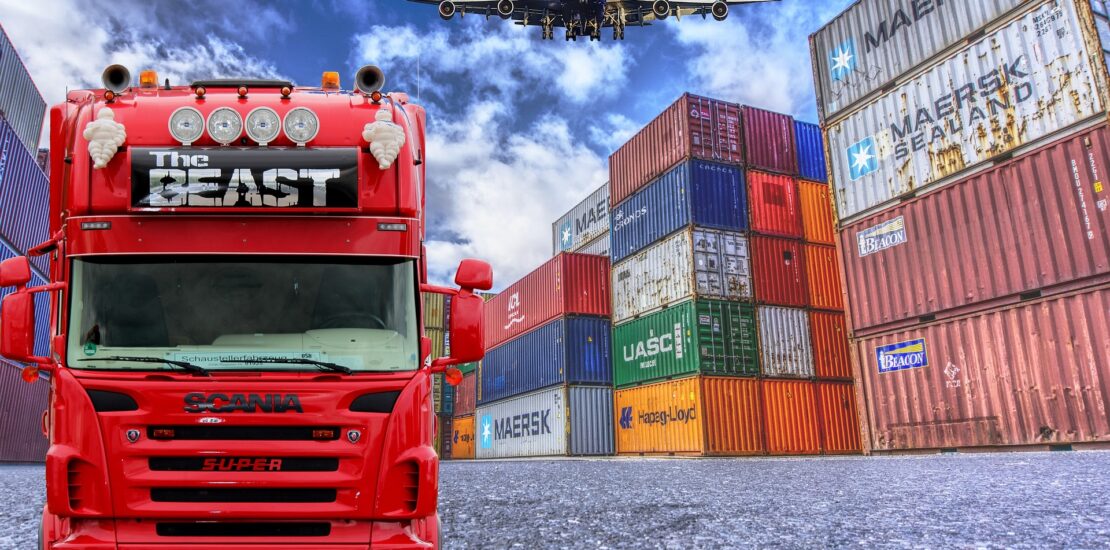- 25 de January, 2022
- Posted by: Filipa Ferreira
- Category: Finance Leaders

The widespread supply chain disruptions of 2021 will continue into this year, dampening the recovery of some industries while also presenting new opportunities for the best-prepared companies.
“There is no place to run,” said Adekunle Oduyemi, ACMA, CGMA, who recently became the finance director of supply chain for Procter & Gamble in North Africa.
The past year, he said, has been the most challenging of his career: Commodity prices have soared, and labour shortages are disrupting transportation, leading to slowdowns and pileups around the world. But Oduyemi is optimistic that organisations that drive productivity will emerge more efficient from a year of shortages and spikes.
“How do we survive this?” Oduyemi asked during a recent interview via videoconferencing. “It’s to remain agile and to leverage insight from data on how you can manipulate and manoeuvre through the situation that we’re facing.”
A recent report from the Economist Intelligence Unit (EIU) said that supply chain troubles are likely to ease — but not disappear — in the year ahead. In 2022, coronavirus cases will likely lead to further temporary shutdowns of plants and ports, e-commerce will eat up still more warehouse space, and shipping prices will remain high, the group predicted.
“These factors will continue to affect not just a single product or commodity, but a wide range,” the report stated, predicting that the crisis will force “businesses across the value chain to pass on the increased costs to consumers”.
Oduyemi, who has worked for nearly a decade at Proctor & Gamble, shared insights for other finance leaders on navigating the year ahead.
Share the story
With rising costs in the supply chain, companies are rushing to find savings and new efficiency in manufacturing and distributing products.
“You need to keep finding productivity within your supply chain that can cover this cost upsurge,” Oduyemi said. But supply chains are extraordinarily complex — and finding those savings means enlisting the help of the people who know them best.
When visiting a manufacturing floor, he will share the business environment and operating context and ask the area owners for ideas and solutions to drive productivity.
“Help them understand why they’re facing this target: You have fixed costs, and we need to find efficiency,” he said. That would lead to suggestions ranging from reduced travel to greater reuse or recycling of materials, waste reduction, maintenance optimisation, sourcing changes.
“They know their area. They know their job floor more than you do. You are only there to facilitate, to engage them,” he said. “But, in the end, they are the most important factor.”
“The message is simple: Tough times don’t last. It’s a cycle,” he said. “We don’t expect it to continue like this. We’ll only experience this once in a lifetime.”
Assess automation
The availability of cheap labour in some countries led some manufacturers to rely more heavily on manual work. But the labour shortage induced by the pandemic has made people understand the benefits of automation. For example, in Southeast Asian countries like Vietnam, there have been struggles to get workers back to work, Oduyemi said.
“With this pandemic, you can now see we need to look at the NPV [net present value] for automation investment in a different way,” Oduyemi said. “We should not just look at the absolute number, but also consider a ‘what if’ situation.”
Investing in automation will come with high upfront costs, but he sees it as a way for manufacturers to achieve “true structural savings” in the face of ever-higher labour costs and scarcity.
Indeed, the EIU report predicted that businesses would invest in automation and AI solutions for “efficient inventory, storage, and delivery management”.
In the midst of upheaval, Oduyemi said, companies must maintain their structural financial position while also searching for long-term improvements. And this crisis is a reminder for finance leaders everywhere to look more closely at their supply chain complexity and evolution to ensure that it continuously meets their business needs.
“It’s fascinating when you’re in the supply chain space. It looks like an empire on its own,” Oduyemi said. “You need to look end-to-end, you need to see how things are synchronising, and how things are working together — to be sure you can deliver your product to the consumers.”
Adapted from: “How finance leaders can rethink the supply chain in 2022”, by Andrew Kenney, a freelance writer based in the US, published on FM magazine on 10 January 2022.
